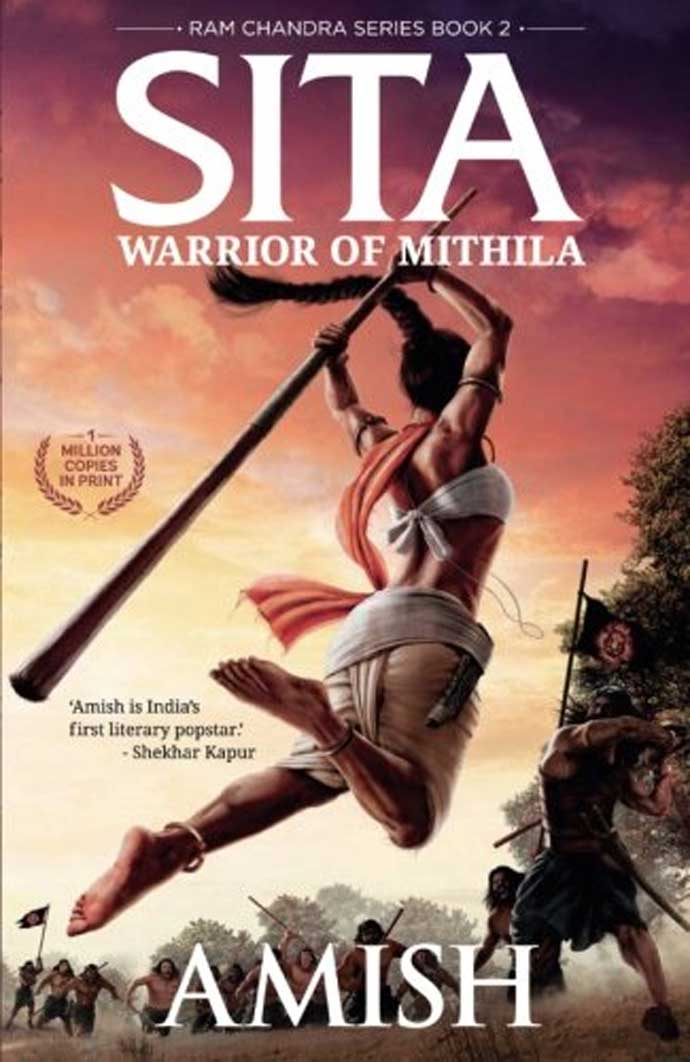Amish Tripathi explains how little we know Ramayana

First he took Lord Shiva and humanised him as never before for the blockbuster Meluha series. Then, he came out with the Ram Chandra series and did what many thought was a treacherous task — to reintroduce Ramayana and its characters. He took the challenge and showed, two years ago, how little we knew about the epic we thought we were well acquainted with.
As he comes out with the second book in the series, Sita: Warrior of Mithila, we catch up with the man who did the impossible — Amish (he doesn’t use Tripathi, his caste surname).
He says it wasn’t that difficult, as our understanding of the Ramayana is based primarily on Ramanand Sagar’s television show in the 1980s and also Tulsidas’ Ramcharitmanas. “Very few have actually read Valmiki’s Ramayana. For instance, there is no mention of Lakshman Rekha in the original text.”

On his latest book, Amish is amused to see so much excitement and discussion on Sita being portrayed as a warrior. “There are several ancient versions where she was shown as a warrior. Even in Valmiki’s Ramayana, she is a very strong character. The meek, demure Sita is a relatively recent phenomenon,” he says, adding how Sita, as a young girl, had picked up Shiva’s bow with one hand — a feat which even great warriors found difficult to emulate.
“This story is quite popular in several folk traditions in north India. The fact that Sita, an adopted child, could become the prime minister of a kingdom, and then the goddess, tells a lot about her character.”
Also, it wasn’t unusual to see women being warriors or intellectuals in those days. “In Vedas,” he says, “we find several women rishis. The Brihadaranyaka Upanishad is essentially the discussion between Yajnavalkya and Maitreyi. As late as the eighth century AD, we find a woman moderating Adi Shankaracharya’s philosophical debate,” he says.
When asked about how Manusmriti is often quoted to show women’s humble position in ancient times, Amish says the issue is two-pronged. “First, very few people have actually read Manusmriti. And, then, we have been giving undue importance to the text, just because it was the first smriti which the British got translated into English.”
He reminds that there were hundreds of smritis, with some like Vyas’s or Parashara’s being “so liberal that they would even shock American liberals today”. Further, he adds, the smritis were time-specific. “We have a smriti for our age as well — Indian Constitution.”
To bolster his claim, Amish explains how Sati was an aberration in India and yet it was projected as a nationwide malaise. “Sati, no doubt, was a heinous crime but there are hardly any textual evidences to verify its existence. I recently read Meenakshi Jain’s book, Sati, which busts the myth of its extensive practice in modern times, forget about the ancient era. It’s just like painting the entire Europeans as cannibals just because there were a few cases of cannibalism in the continent.”
Here comes the fearless warrior.Presenting, the official book cover of #SitaWarriorOfMithila!Pre-order your copy: https://t.co/VU98k5A2ol pic.twitter.com/u6VZe1iLZz
— Amish Tripathi (@authoramish) May 3, 2017
Lord Rama is often criticised over the treatment being meted out to Sita. Amish refuses to defend the wrongdoings, but says Rama did so because “he was an ideal follower of law. Such people are good for society, and not for family. For, family doesn’t need rule; it needs love.”
He recalls Rama’s relations vis-à-vis Ahalya and Shabari to, in fact, claim that he was a “rebel” fighting for women’s cause. Quoting Ramcharitmanas, wherein Rama says that all human beings, including transgenders, who love all and give up deceit, are his people, he says: “It’s more progressive than today’s law in India where we are still debating Article 377.”
But does it ever bother Amish that writing about a religious figure may land him in controversies? Laughs, the writer as he says matter-of-factly, “Most controversies are created by writers themselves. The first book of my Ramachandra series was released two years ago. Have you heard any controversy on it?”
He also doesn’t give any credence to the intolerance debate, which comes up time and again, especially after the coming of the Modi government.
“This debate is all about the rise of the new elite vis-à-vis the old. These are power games, and have nothing to do with liberalism,” says Amish, who confesses he mostly reads non-fiction, the most recent being Shashi Tharoor’s An Area of Darkness and Sanjeev Sanyal’s The Ocean of Churn.
Is it any surprise that Amish’s next book is a non-fiction, Immortal India, set for release later this year?

